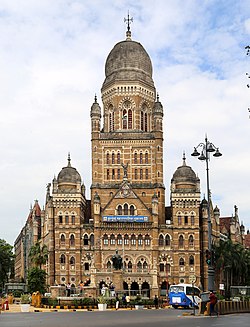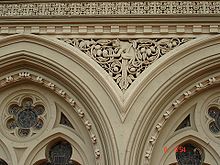
Chhatrapati Shivaji Terminus, is a historic railway terminus and UNESCO World Heritage Site in Mumbai, Maharashtra, India.
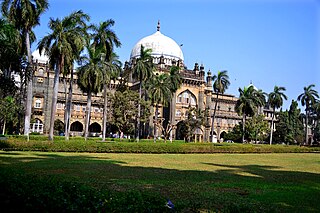
Chhatrapati Shivaji Maharaj Vastu Sangrahalaya, (CSMVS) originally named Prince of Wales Museum of Western India, is a museum in Mumbai (Bombay) which documents the history of India from prehistoric to modern times.

The Gateway of India is an arch-monument completed in 1924 on the waterfront of Mumbai (Bombay), India. It was erected to commemorate the landing of George V for his coronation as the Emperor of India in December 1911 at Strand Road near Wellington Fountain. He was the first British monarch to visit India.
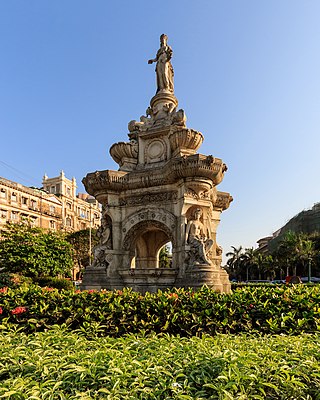
Flora Fountain is a Fountain located at the Hutatma Chowk is an ornamentally sculpted architectural heritage monument located at the southern end of the historic Dadabhai Naoroji Road, at the Fort business district in the heart of South Mumbai, Mumbai, India. Flora Fountain, built in 1864, depicts the Roman goddess Flora. It was built at a total cost of Rs. 47,000, or 9,000 pounds sterling, a large sum in those days.

South Mumbai, colloquially SoBo from South Bombay in Indian English, administratively the Mumbai City District, is the city centre and the southernmost precinct of Greater Bombay. It extends from Colaba to Mahim and Sion neighbourhoods, and comprises the city's main business localities, making it the wealthiest urban precinct in India. Property prices in South Mumbai are by far the highest in India and among the highest in the world.

Crawford Market is one of South Mumbai's most famous markets. The building was completed in 1869, and donated to the city by Cowasji Jehangir. Originally named after Arthur Crawford, the first Municipal Commissioner of the city, the market was later renamed to honour Indian social reformer Mahatma Jotirao Phule. The market is situated opposite the Mumbai Police headquarters, just north of Chhatrapati Shivaji Terminus railway station and west of the J.J. flyover at a busy intersection. It was the main wholesale market for fruits in Mumbai until March 1996, when the wholesale traders were relocated to Navi Mumbai.

The General Post Office, Mumbai, is the central post office of the city of Mumbai, India. The post office handles most of the city's inbound and outbound mail and parcels. Situated in the vicinity of Chhatrapati Shivaji Terminus, the Mumbai General Post Office (GPO) is a paradigm of Indo-Saracenic architecture.
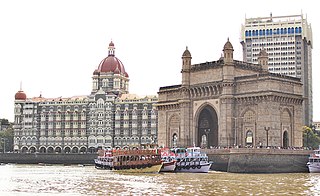
A resident of Mumbai is called a Mumbaikar. People prefer to stay close to a railway station for easy access to the metropolis. Many city-dwellers lead a fast-paced life with very little time for other activities owing to a significant amount of time spent on daily commuting.

Reay Road is a railway station on the Harbour Line of the Mumbai Suburban Railway. The station was named after Lord Reay, Governor of Bombay between 1885 and 1890. It was opened in 1910 and was originally used as a terminus for the Kurla - Reay Road harbour line on the Great Indian Peninsular Railway, the first railway line in India.
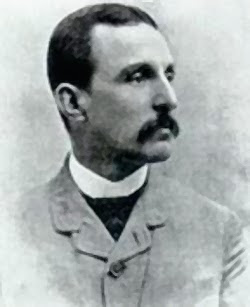
Frederick William Stevens was an English architectural engineer who worked for the British colonial government in India. Stevens' most notable design was the railway station Victoria Terminus in Bombay.

The Royal Bombay Yacht Club (RBYC) is one of the premier gentlemen's clubs which was founded in 1846 in Colaba, an area of Mumbai in India. The building was designed by John Adams, who also designed the nearby Royal Alfred Sailors' Homes, and was completed in 1896.
The Ballard Estate business district is situated in the financial district of Fort. Located between Chhatrapati Shivaji Maharaj Terminus and Fort in South Mumbai, it hosts the offices of shipping companies and the headquarters of the Mumbai Port Trust at the Port House. It has the Reliance Centre, many mid-priced hotels and a noted Irani cafe, Britannia.

Dadabhai Naoroji Road (D.N.Road), a North–South commercial artery road, in the Fort business district in South Mumbai of Maharashtra, India, is the nerve centre of the city, starting from the Mahatma Phule Market ,linking Chhatrapati Shivaji Maharaj Terminus, leads to the Hutatma Chowk at the southern end of the road. This entire stretch of the road is studded with Neo–Classical and Gothic Revival buildings and parks built in the 19th century, intermingled with modern office buildings and commercial establishments.
The architecture of Mumbai blends Gothic, Victorian, Art Deco, Indo-Saracenic & Contemporary architectural styles. Many buildings, structures and historical monuments remain from the colonial era. Mumbai, after Miami, has the second largest number of Art Deco buildings in the world.
Rahul Mehrotra is Founder Principal of architecture firm RMA Architects of Mumbai + Boston, and is Professor of Urban Design and Planning and Chair of the Department of Urban Planning and Design at the Harvard Graduate School of Design (GSD) in Cambridge, Massachusetts.
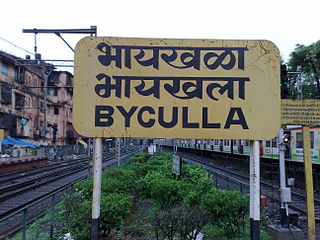
Byculla is railway station on the Central line of the Mumbai Suburban Railway. It is located in the neighbourhood of Byculla.

Bandra is a railway station on the Western Line and Harbour Line of the Mumbai Suburban Railway network. It serves the Bandra suburban area and the commercial area of Bandra-Kurla Complex (BKC). Bandra Terminus is near to Bandra railway station and serves interstate traffic on the Western Railway.

Maharashtra state in India is known for its Famous caves and cliffs. It is said that the varieties found in Maharashtra are wider than the caves and rock-cut architecture found in the rock cut areas of Egypt, Assyria, Persia and Greece. The Buddhist monks first started these caves in the 2nd century BC, in search of serene and peaceful environment for meditation, and they found these caves on the hillsides.

Many heritage structures are found in Mumbai, India.
Abha Narain Lambah is an Indian conservation architect whose eponymous architectural practice has restored several of India's UNESCO World Heritage Sites like the Ajanta Caves, Golconda Fort and Mahabodhi Temple, and Mumbai's Victorian buildings like the Crawford Market, Royal Opera House, Asiatic Society of Mumbai Town Hall and Knesset Eliyahoo Synagogue.
